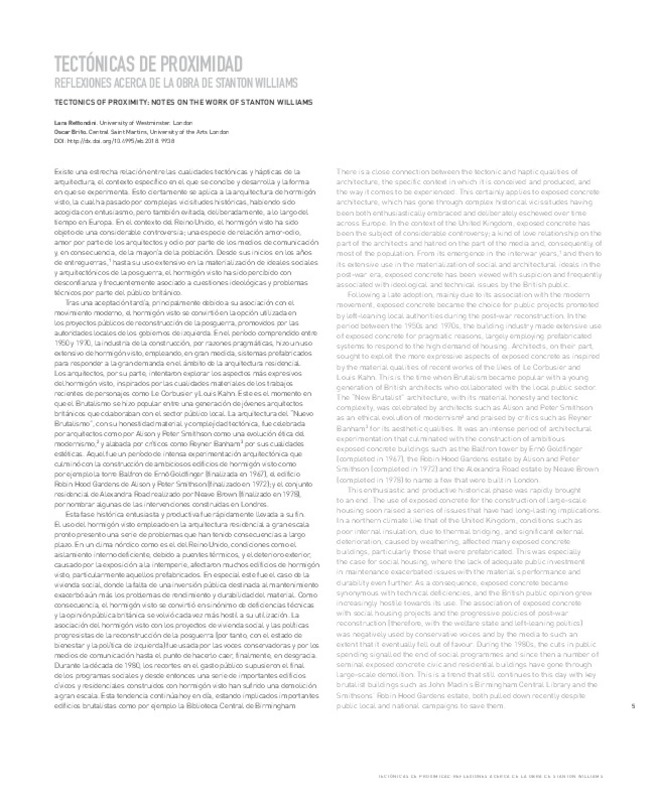JavaScript is disabled for your browser. Some features of this site may not work without it.
Buscar en RiuNet
Listar
Mi cuenta
Estadísticas
Ayuda RiuNet
Admin. UPV
Tectónicas de proximidad: reflexiones acerca de la obra de Stanton Williams
Mostrar el registro completo del ítem
Rettondini, L.; Brito, O. (2018). Tectónicas de proximidad: reflexiones acerca de la obra de Stanton Williams. EN BLANCO. Revista de Arquitectura. 10(24):5-7. https://doi.org/10.4995/eb.2018.9938
Por favor, use este identificador para citar o enlazar este ítem: http://hdl.handle.net/10251/101186
Ficheros en el ítem
Metadatos del ítem
| Título: | Tectónicas de proximidad: reflexiones acerca de la obra de Stanton Williams | |
| Otro titulo: |
|
|
| Autor: | Rettondini, Lara Brito, Oscar | |
| Fecha difusión: |
|
|
| Resumen: |
[EN] The method of layering materials is the more noticeable in the work of Stanton Williams. To obtain a cohesive ensemble, they combine exposed concrete with a carefully selected stratum of ‘noble’ materials including ...[+]
[ES] El método de estratificar materiales es el más evidente en el trabajo de Stanton Williams. Para obtener un conjunto cohesivo, combinan el hormigón visto con un estrato cuidadosamente seleccionado de materiales "nobles", ...[+]
|
|
| Palabras clave: |
|
|
| Derechos de uso: | Reconocimiento - No comercial (by-nc) | |
| Fuente: |
|
|
| DOI: |
|
|
| Editorial: |
|
|
| Versión del editor: | https://doi.org/10.4995/eb.2018.9938 | |
| Tipo: |
|








